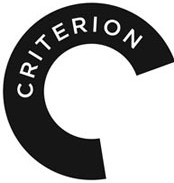 MMC!‘s retrospective on the National Film Board of Canada wraps up where it first began, with the Canada Vignettes. Provided here are four MMC! favourites: Fort Prince of Wales (Brad Caslor, 1978), Spence’s Republic (Brad Caslor, 1978), Flin Flon (Tina Horne, 1978), and Lady Frances Simpson (Christopher Hinton, 1978). All take a cheeky view of Canadian history, reveling in its absurdities and undercutting ideas of “great men” leading the nation to some inevitable glory. And all, for some strange reason, have some connection to the Province of Manitoba. Go figure.
MMC!‘s retrospective on the National Film Board of Canada wraps up where it first began, with the Canada Vignettes. Provided here are four MMC! favourites: Fort Prince of Wales (Brad Caslor, 1978), Spence’s Republic (Brad Caslor, 1978), Flin Flon (Tina Horne, 1978), and Lady Frances Simpson (Christopher Hinton, 1978). All take a cheeky view of Canadian history, reveling in its absurdities and undercutting ideas of “great men” leading the nation to some inevitable glory. And all, for some strange reason, have some connection to the Province of Manitoba. Go figure.
As per the NFB:
A Canada Vignette giving a humorous animated version of the history of Fort Prince of Wales from its construction to its capture by the French.
As per NationalFilmBoardFan:
An animated vignette about the role of Thomas Spence in the formation and demise of the Republic of Manitoba at Portage la Prairie in 1867-68.
As per the NFB:
This short documentary vignette reveals the curious origin of the name of Flin Flon, Manitoba.
As per NationalFilmBoardFan:
An animated vignette on the journey of Lady Frances Simpson, with her piano, from England to Lower Fort Garry.
And so, that’s it for our retrospective on the National Film Board of Canada! Did we make any NFB converts? Did anyone make any discoveries or find any favourites? We left a lot a deserving films and filmmakers out of this survey of the Film Board – would anyone like to see MMC! offer another retrospective for an Essential Works of the NFB Volume 2 next July?
